Behind the scenes on Netflix’s sci-fi robot adventure movie.
The Electric State, a sci-fi adventure film based on the illustrated novel of the same name by Simon Stålenhag, is one of Netflix’s most VFX-intensive projects yet. Digital Domain was among the vendors tasked with bringing the story’s integral robot characters to life.
Nick Cosmi, Asset Supervisor at Digital Domain, tells us how the team used Mari to create scores of believable robot characters with individual personalities.
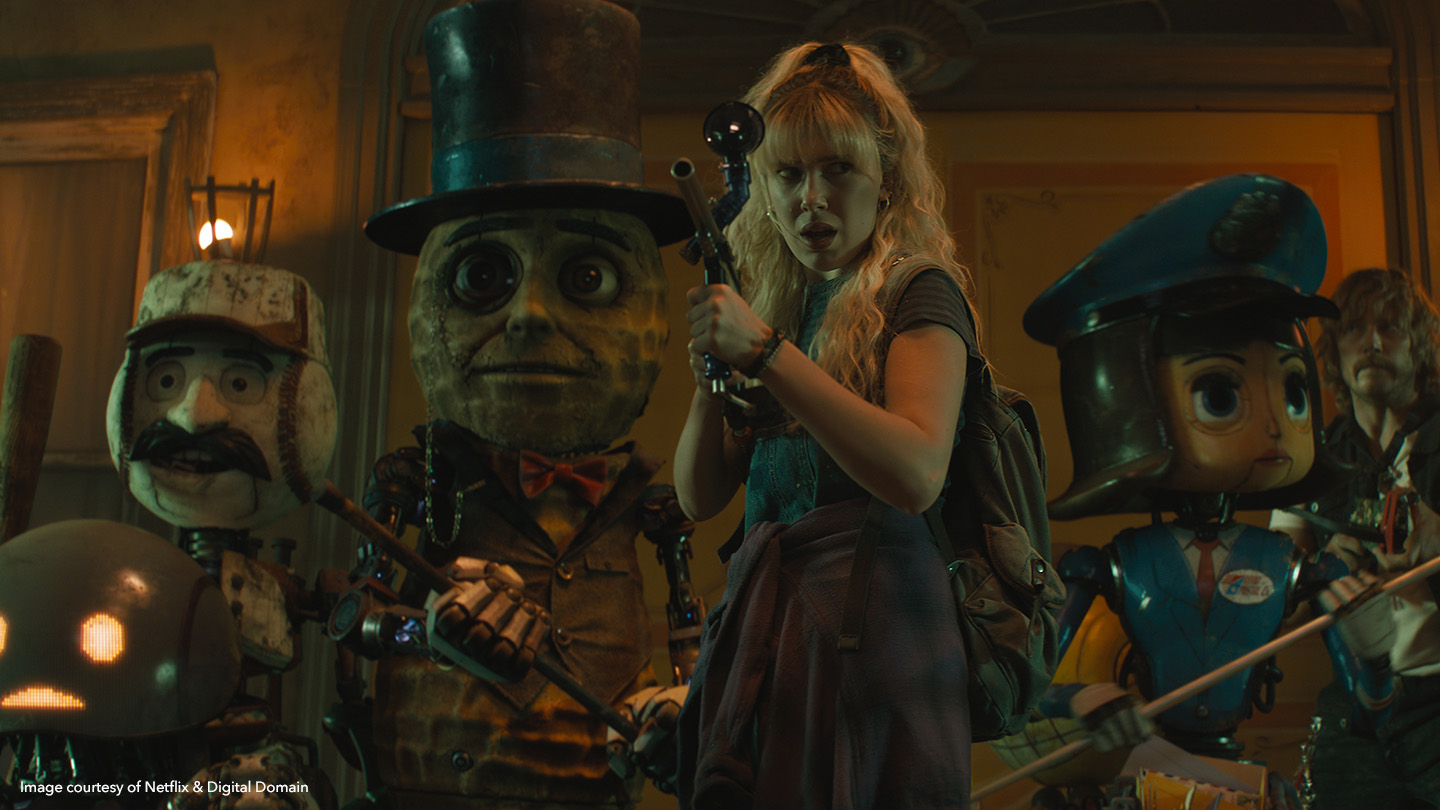
Taking texture inspiration from the book
Directed by Anthony and Joe Russo — AKA the Russo brothers — The Electric State is set in an alternate 1990s world transformed by a robot uprising. Teenager Michelle (played by Millie Bobby Brown) is on a mission to track down her brother, whose consciousness is trapped in a sentient robot. Along the way she teams up with a soldier-turned-smuggler Keats (Chris Pratt) and an unlikely crew of robots.
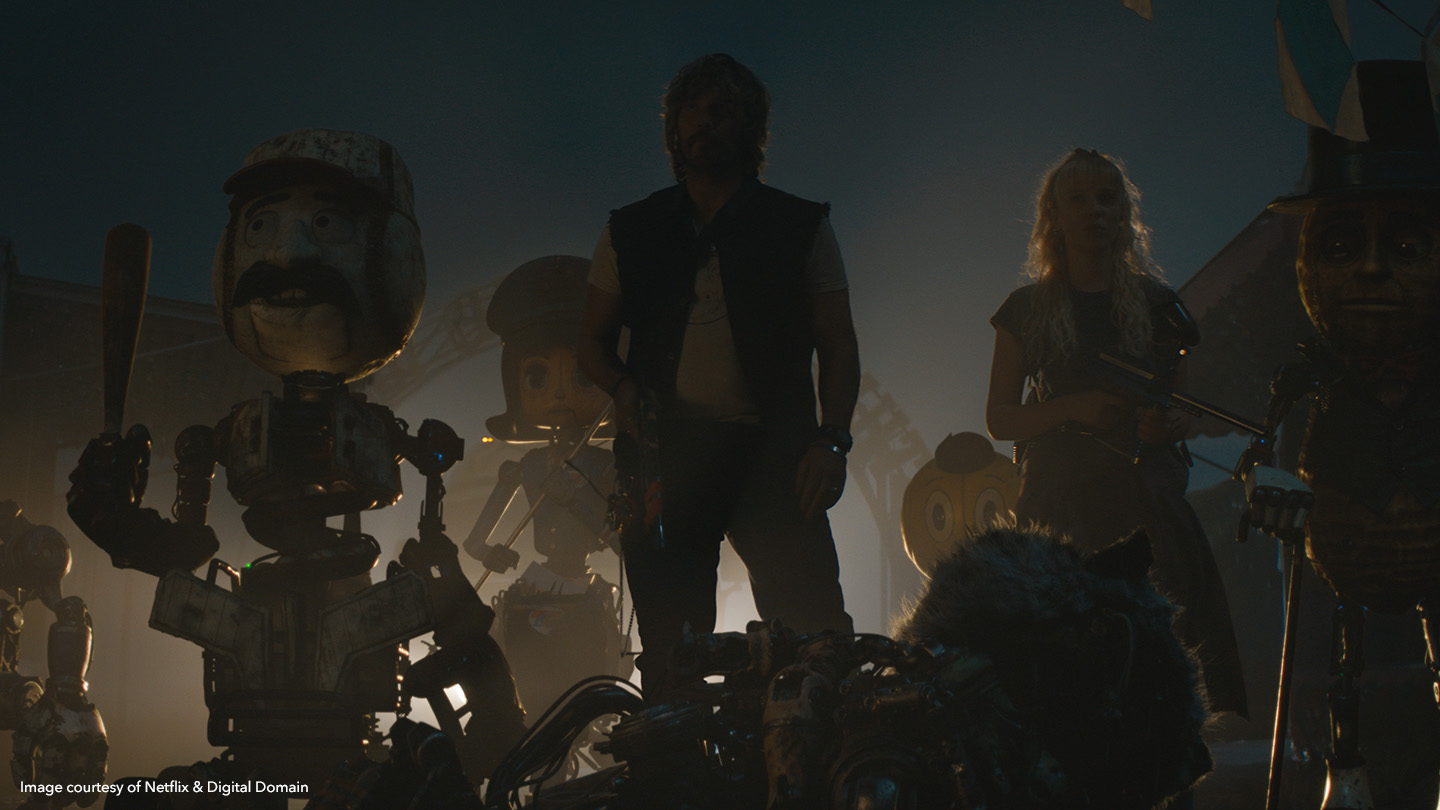
Digital Domain developed a total of 480 assets for The Electric State VFX, including 61 uniquely designed robot characters. To reflect the look of the story’s retro-futuristic post-uprising America, they built up a library of references ranging from machinery, hydraulics, and wires to tractors, metals, and yard equipment. Building out a new material library that both the Texture and LookDev teams could use within Mari was a new addition to the studio’s texturing workflow for this project.
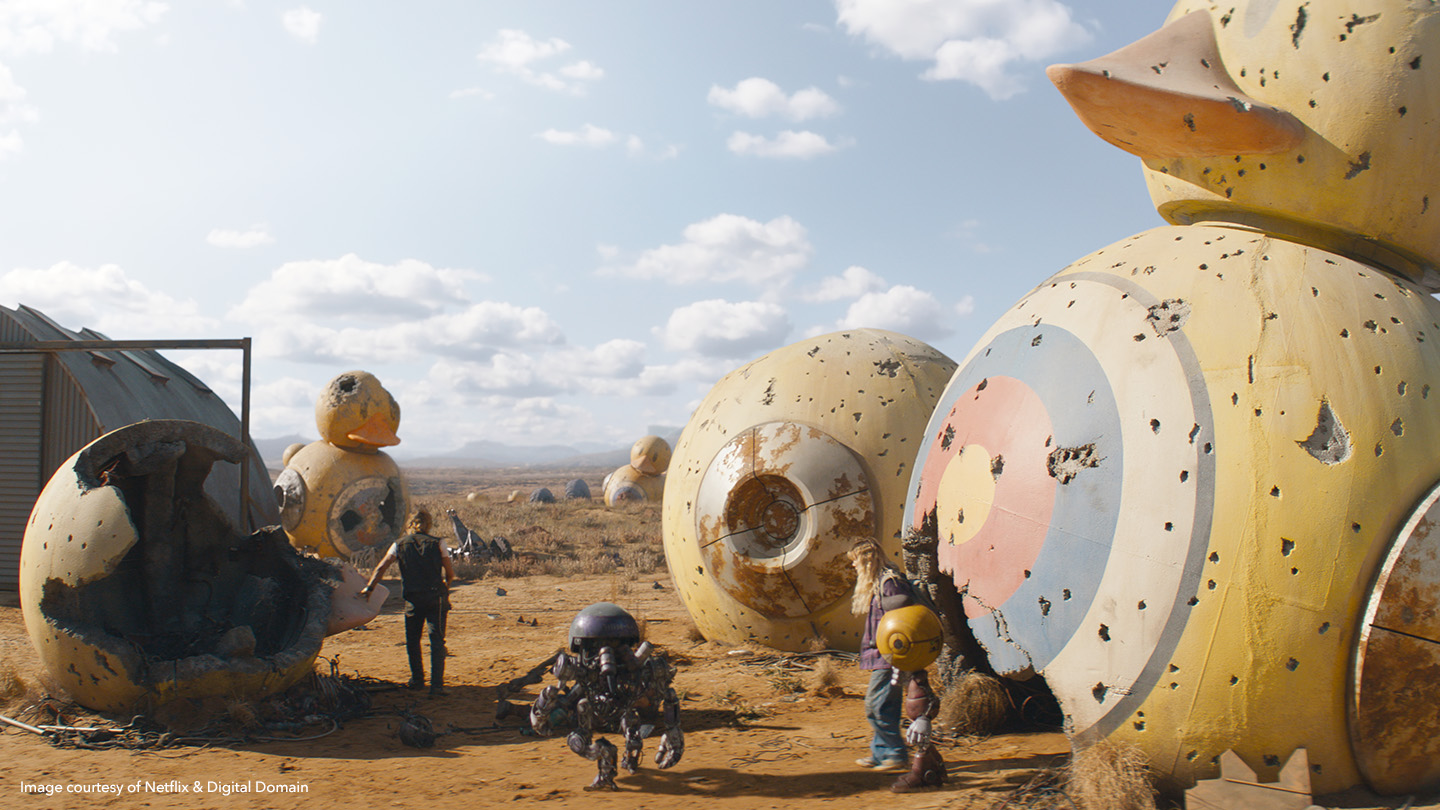
“We collected as many visual references as we could and started building ideas around the materials we see in this world, including the color palette and texture the author achieves in his original paintings,” says Nick. “One of the main things that stood out in the artwork is how diffuse the materials in his world look — they lack specularity and reflection.”
Storytelling through texturing
To bring the book’s robot characters to the screen, the team researched and planned out how all of the robotic joints would move and work. Their material library helped them to ensure that the metals used were accurate, as well as conveying the artistic intent.
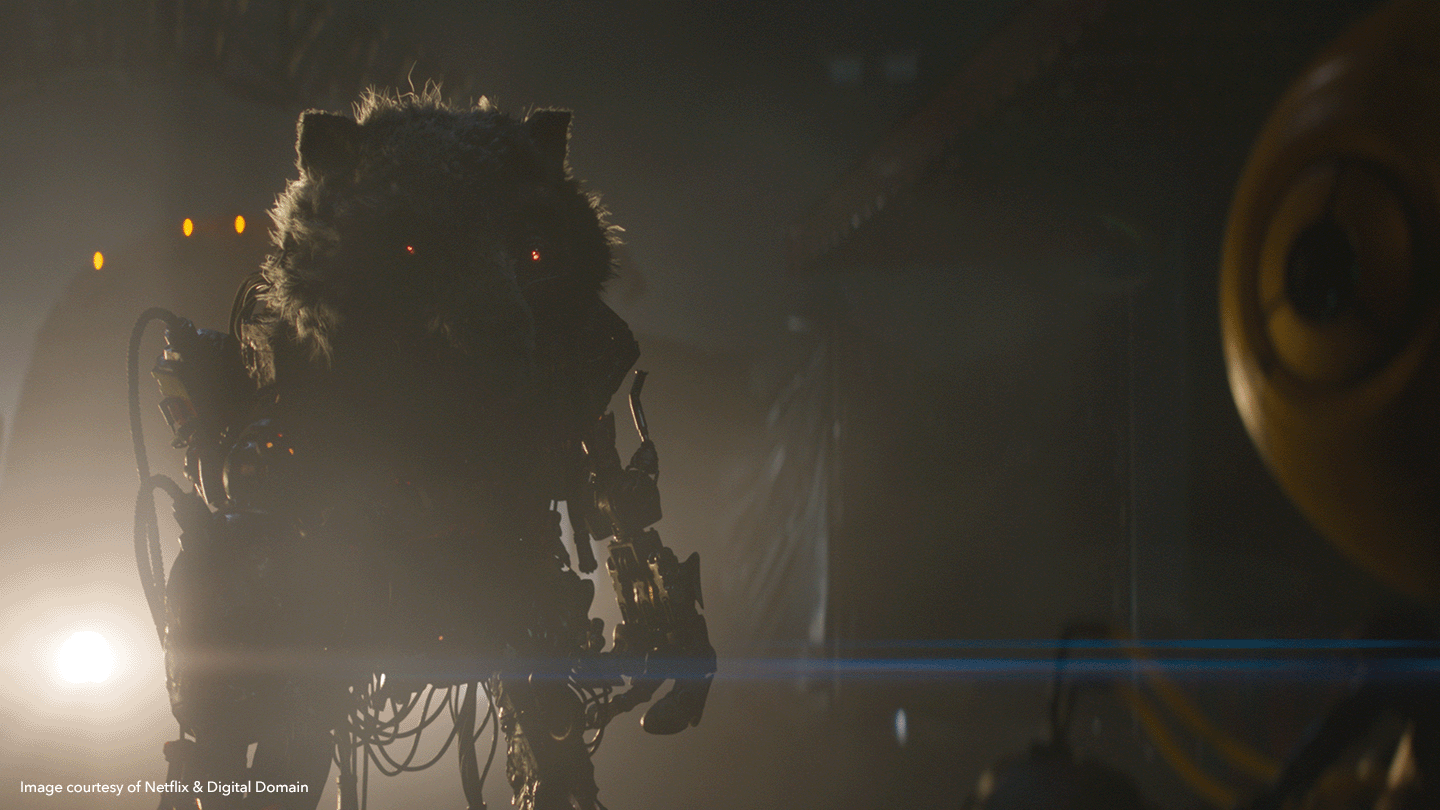
“We did a lot of work in texture to make sure we were ‘breaking up’ any clean and perfect metals, to be greasy, oily, dusty, and dirt-covered,” says Nick.
This meant clearly defining what all of the masks would be used for. Nick explains: “For example, a mask for drips needed a clear goal — are they dried dirt drips or are they wet oil drips? Where’s the grease building up, and is it in the correct location? Are we layering all of these elements properly in the way we paint our materials? Are we leaving room for composition instead of just stacking everything procedurally in one spot?”
Bringing The Electric State robots to life
The robots in The Electric State are central to the story, and so the character builds had to bring believable personality and emotion to the screen.
“We tried to stay true to that fun style and give our robots personality through their static design,” says Nick. “But we also had to stay grounded in reality and use material observation from things we know.”

One of the key robot characters is Cosmo, a sphere-headed robot based on a fictional cartoon character. Nick explains: “We stuck to his original design from the book. We created our red paint and metal materials around it, but also added some unique transitions and detailing to the paint.”
Another key element, the scavenger robots are built from scavenged ‘dead’ robots. Nick says: “These robots were heavily grunged up and damaged but had to use some restraint when adding grime to prevent them from turning into homogenous dirty hunks of metal. They were fun to paint because we had lots of success using really extreme color combinations — like acid greens and bright pinks — hues, and saturation we rarely use in texturing.”
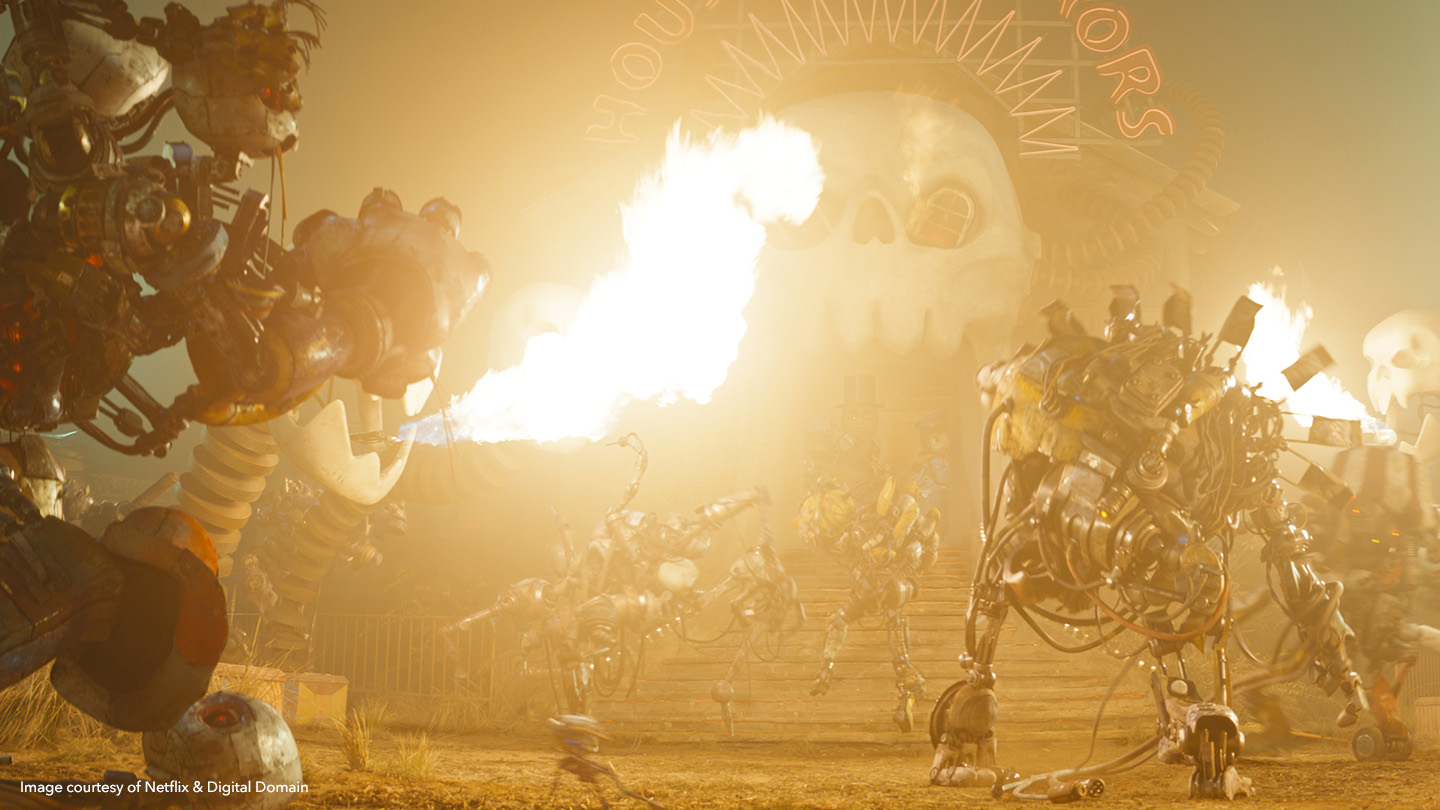
Blending realism and emotion into character animation
Bringing realism and emotion to the animated characters is an essential part of the process. To achieve this, artists were matched up to characters that fitted their artistic personality.
“Texture artists pour a lot of their emotion into the artwork they’re creating,” says Nick. “This project really allowed us to be as creative as we possibly could. Each has their own unique element texture painted in, unique to the artist who created them.”
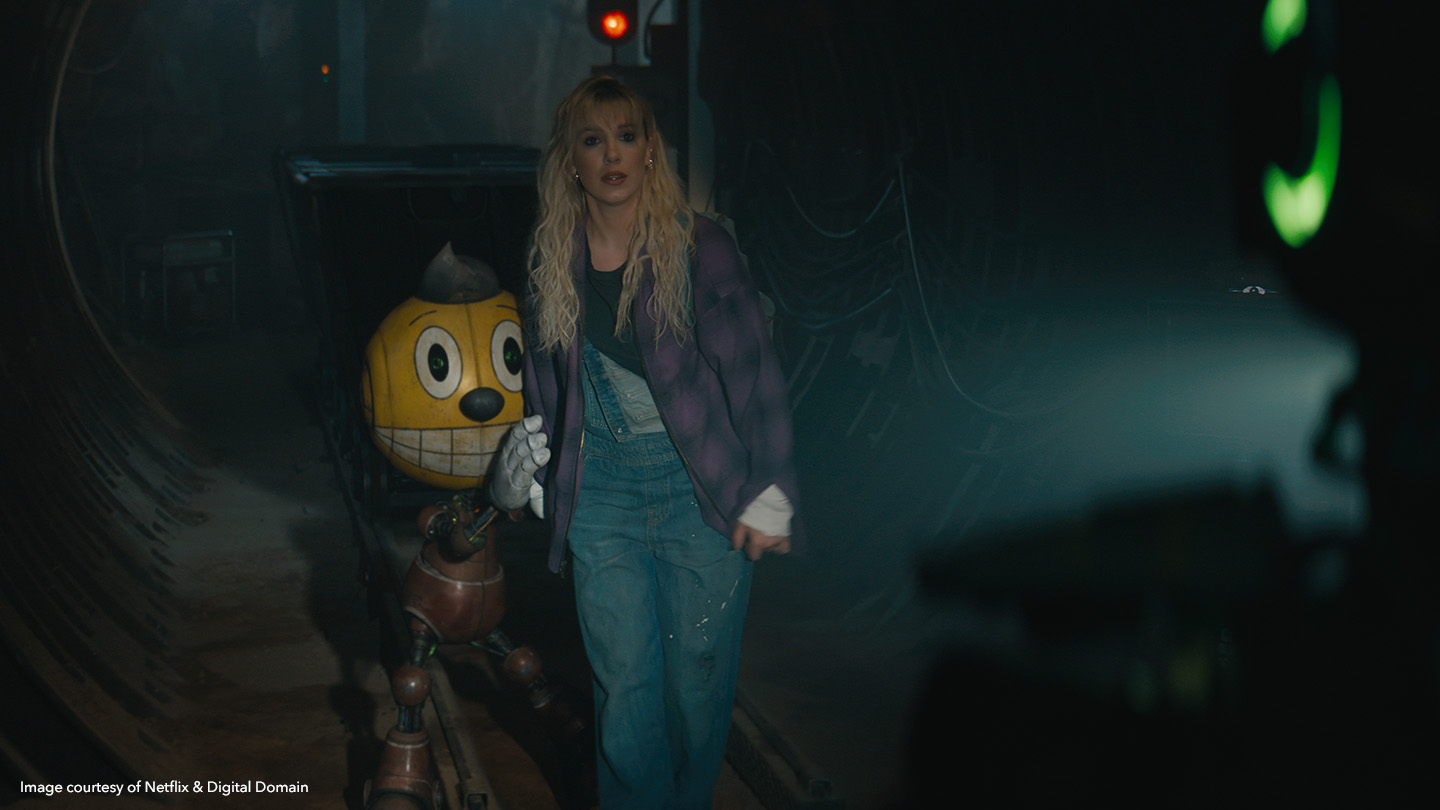
One of Nick’s favorite robots to work on was RoadSignScav, incorporating an engine body and a collection of road signs. In preparation, Nick searched for ugly-looking road signs in his neighborhood, and also photographed bear-proof containers from Sequoia National Park with bear claw scratches on them. “I got to use all of these weird photographed references to create this robot,” he says.
Creating hero assets for The Electric State
Two of the most challenging characters to put together were Mr. Peanut, a robotic, monocled peanut based on the famous Planters company mascot, and ‘Herman-20ft’ — Keats’ loyal robot buddy Herman, in his supersized form.
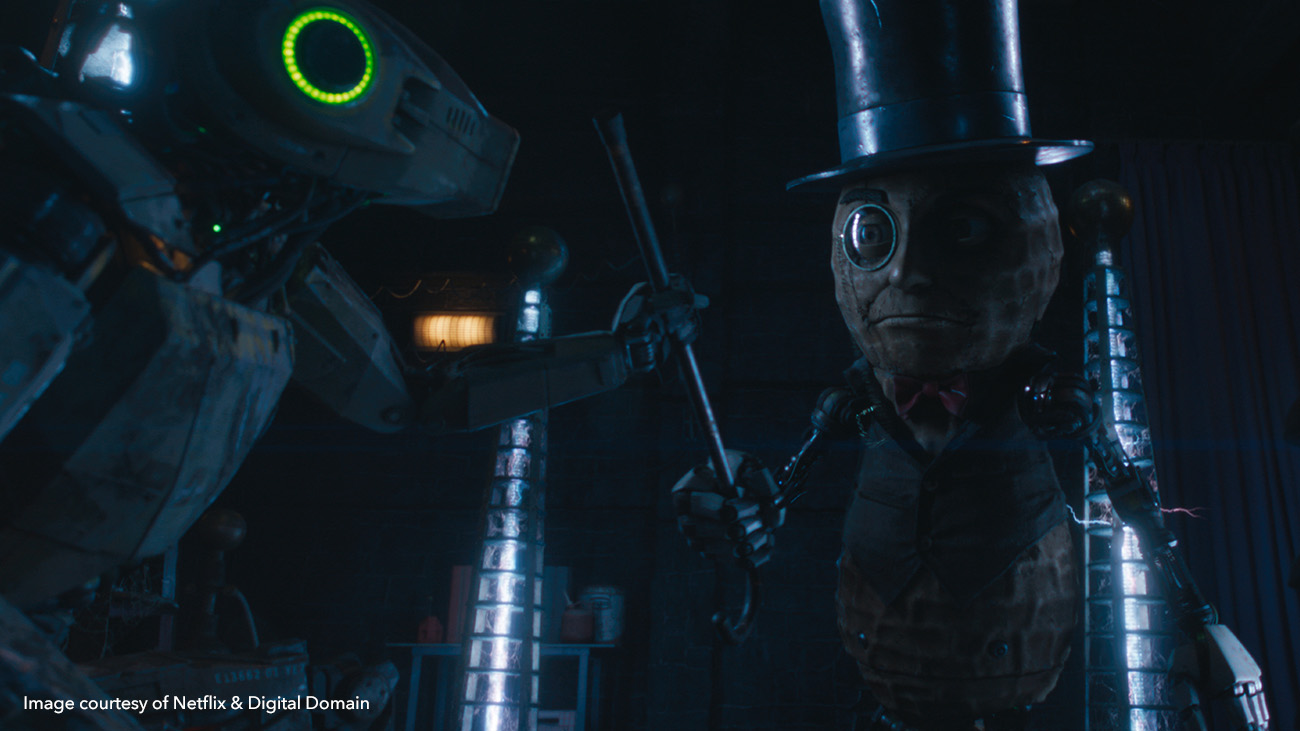
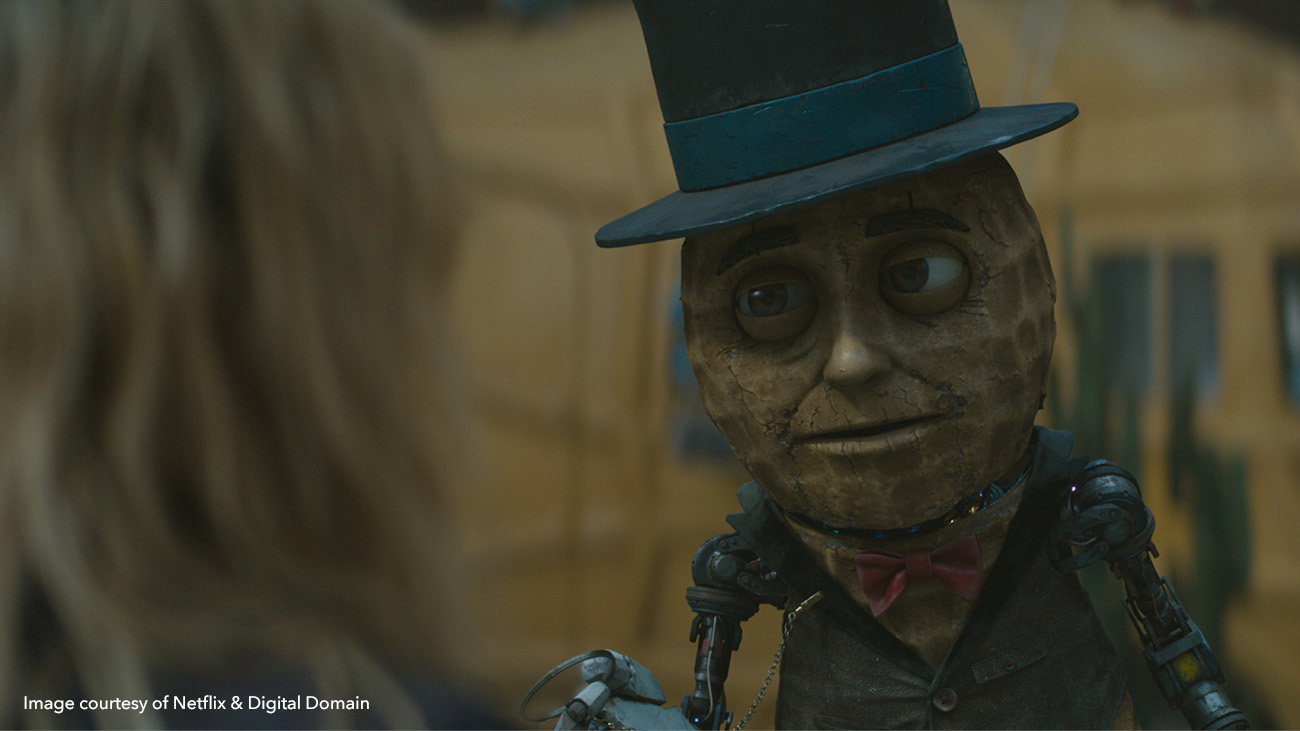
For Mr. Peanut, the statesman-like leader of the robots, the Digital Domain team went through multiple design changes related to how the character would act and move. As an old oily robot with a number of painted and metallic surfaces, who also wears a tweed wool vest, the character was incredibly complex. This was further complicated when his head is ripped off during a fight scene to reveal an elaborate mechanical cage, LED lights, and damaged circuitry.
“We knew his head was supposed to be some sort of foam latex, like an old animatronic, but had difficulty finding the right reference,” says Nick. “The foam peanut face and body turned into a full creature build approach. His face is supposed to deform while he’s talking, and the cracks are painted and sculpted with animated displacement maps to open up and get wider around the mouth movements.”
Building a 20ft robot
For Herman-20ft, the challenge was scale. Despite being 20 feet tall, the character had to have the same texture resolution as the assets around him. As a result, he ended up having around 280 UDIMs which meant that the complex painting work needed to be split between several artists.
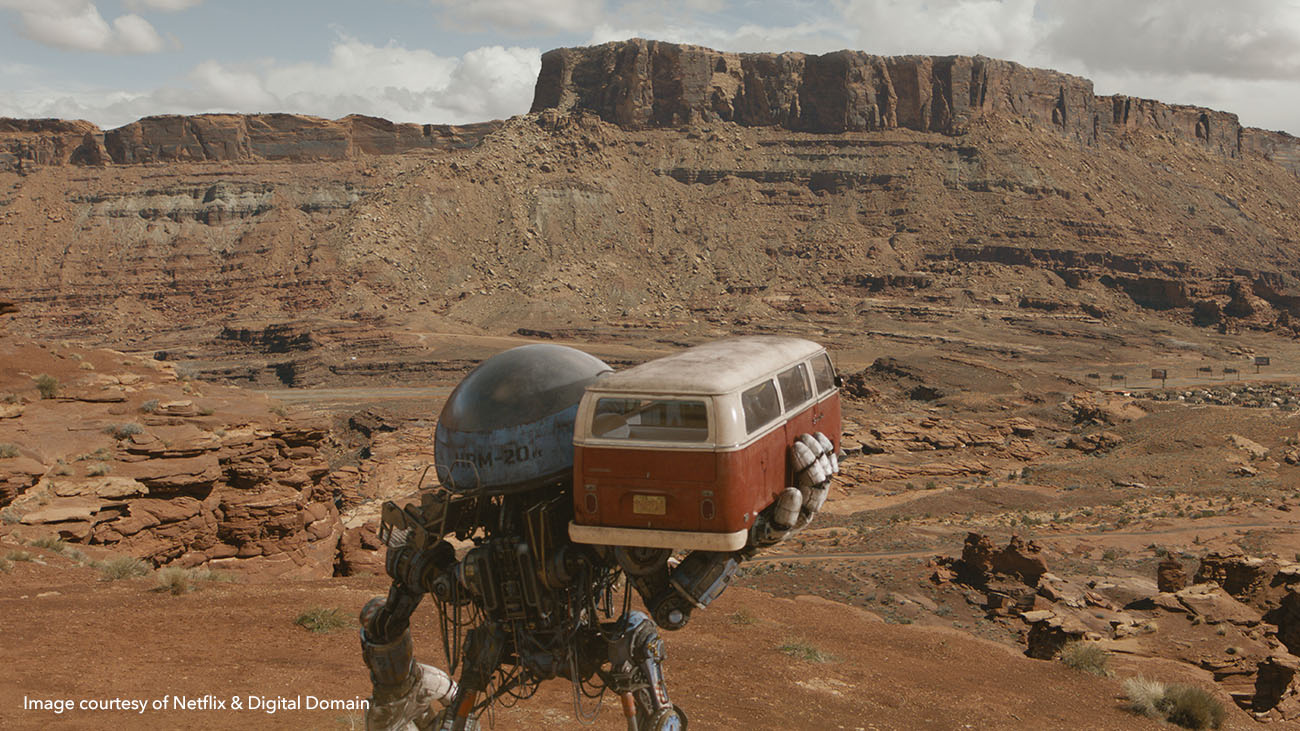
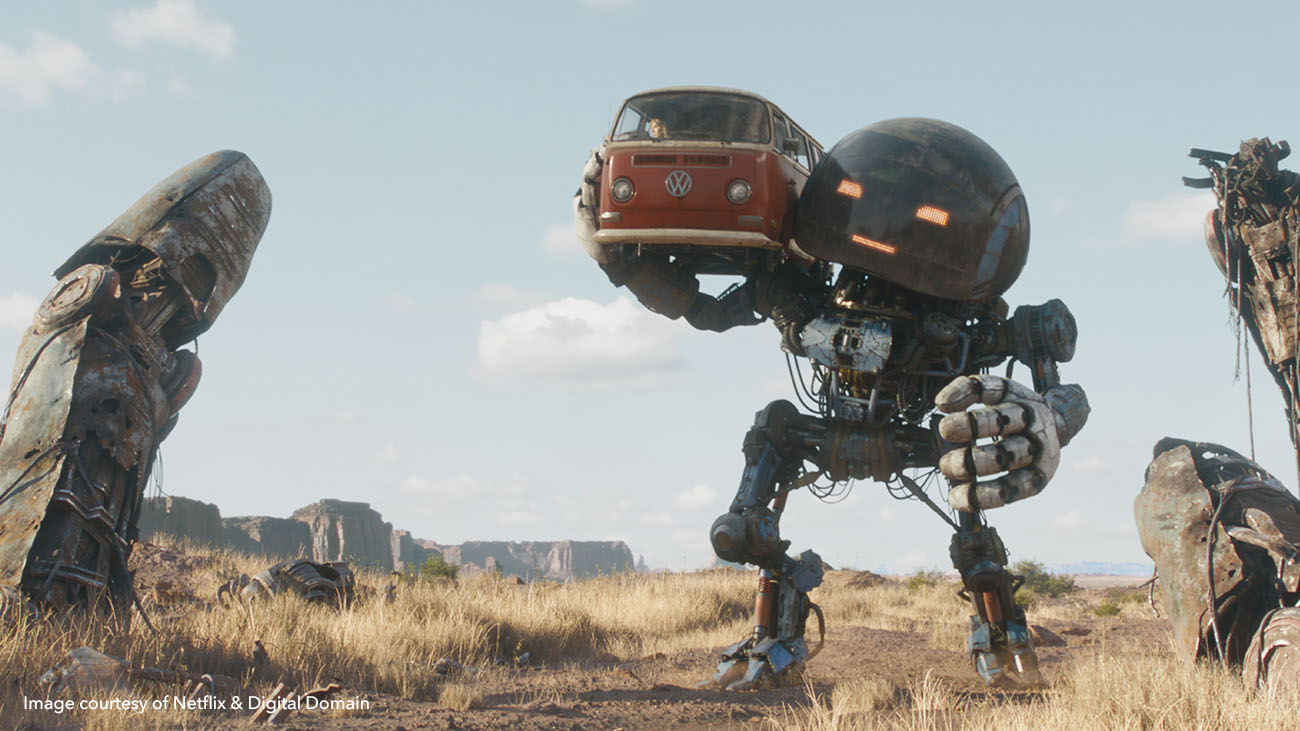
“Splitting any asset has to be done with extreme care because you have to manage texture publishes, and make sure artists aren’t over-writing each other's work,” says Nick. “You have to collaborate and be on the same page with everything from channels to color values, scalar values, masking, and quality. We found and planned divisions so we could ‘cut’ him up.”
Texturing complex hero assets
The character build for Herman-20ft highlights one of the most important considerations when texturing a hero asset — the number of UDIMs, combined with the level of detail needed.
“Hard surface UV’ing is no joke — it's tough and time-consuming,” says Nick.
The team used the same setup for all assets — hero and background — including UVs, geo-bakes, masks, setup base materials, and detailing. Along with the material library, the team followed consistent mask channel placement of details so that Texture and LookDev could match up their template outputs, streamlining the asset through each department.
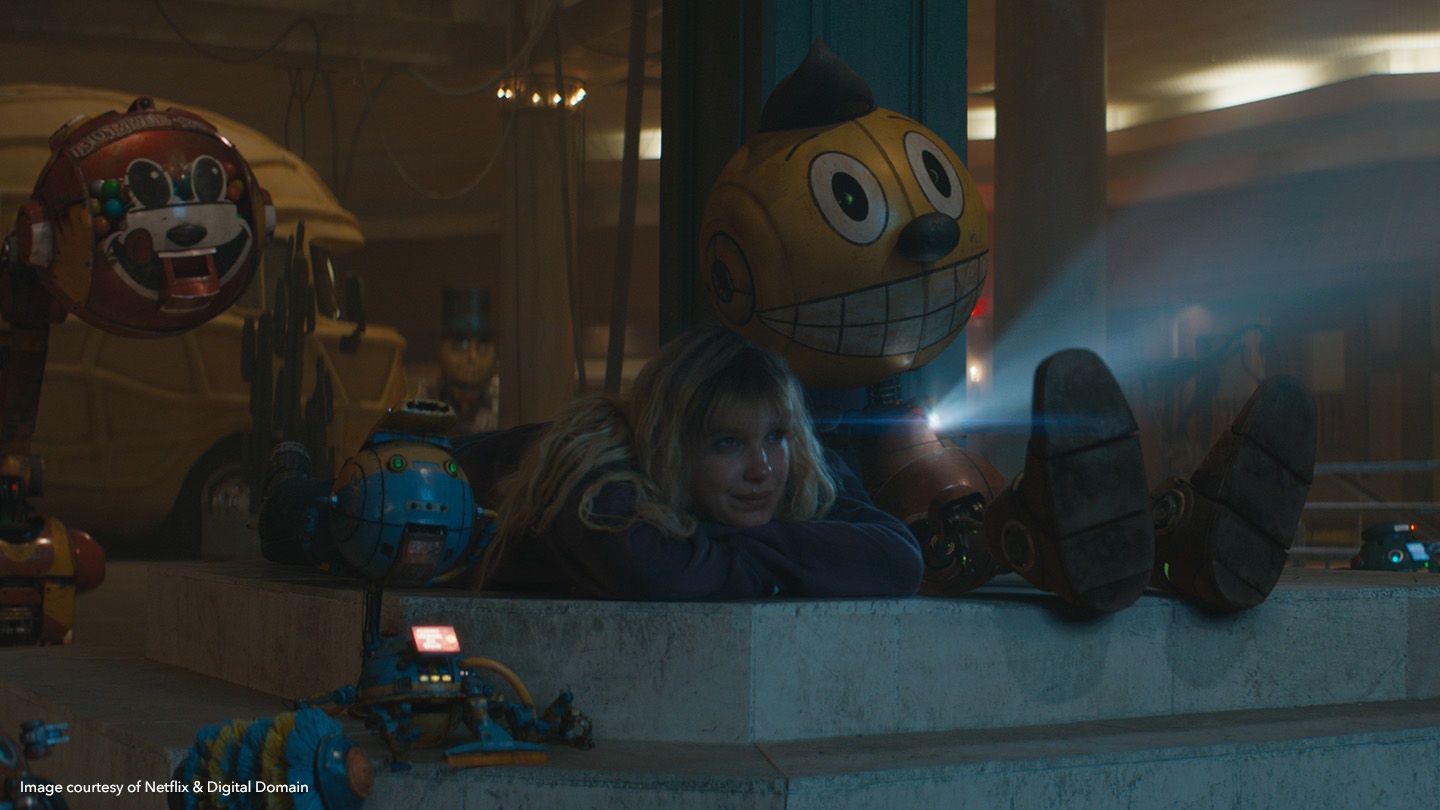
How Mari helped bring textures to life
The studio updated its texture workflow for The Electric State by moving to the material system in Mari, and building out a new material library.
“We knew that our assets would be very heavy, and felt that Mari would be the right software to help us achieve the level of photoreal detail we were trying to achieve. We also wanted the materials to be photo-based and tileable, as opposed to procedural patterns. We used Mari to make a huge majority of our library with some assistance from Nuke. Our end goal is not to create a smart material that solves everything, but rather the foundation that we artistically build upon.”
To start, the team built around 60 materials covering everything from metals, painted surfaces with different colors, rusts, and grimes, to basic rubbers and plastics. They all were built with the ability to customise 2D or 3D axis tiling, with basic HSV, brightness lookups, and luminance controls for scalar channels.
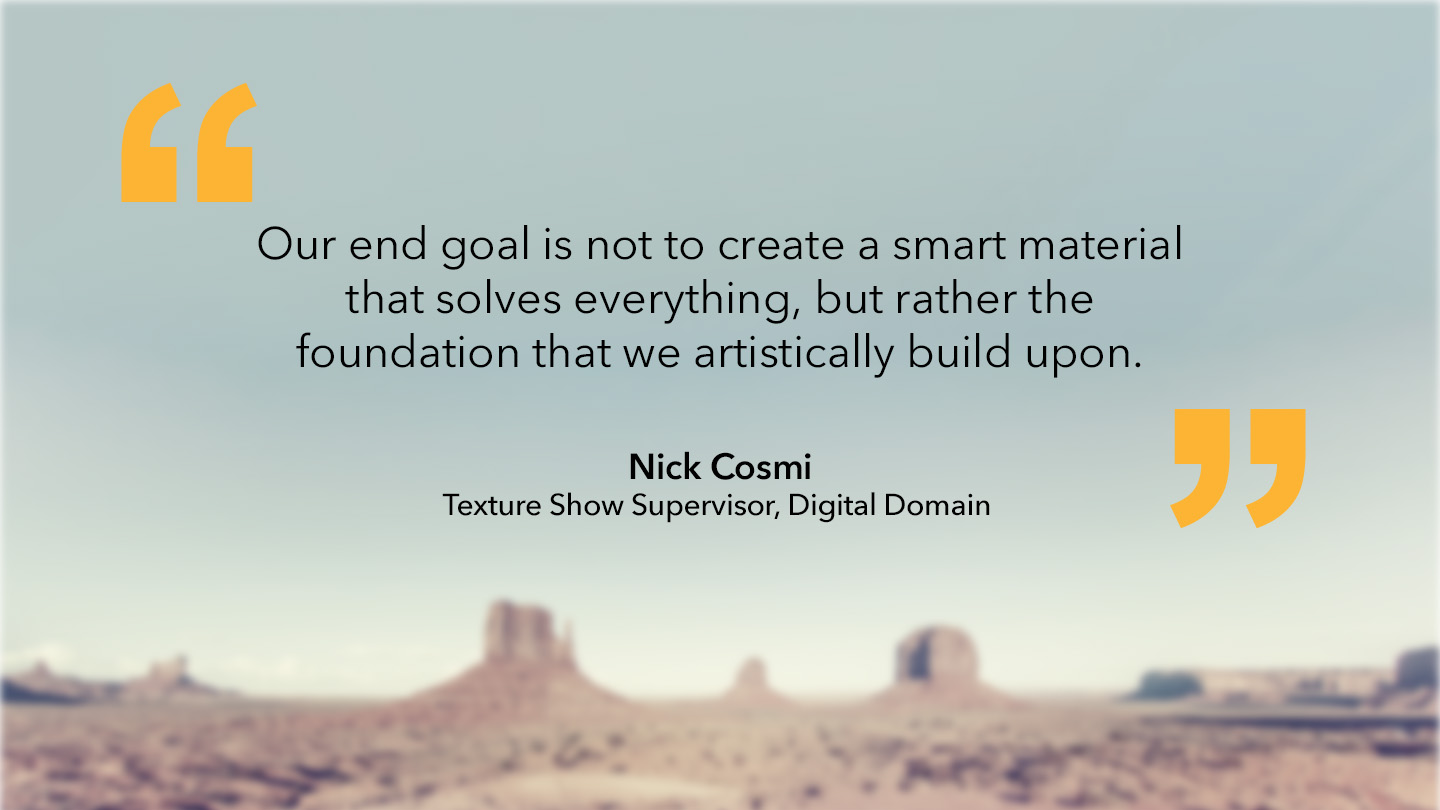
“I really enjoyed how the material system gave me a shaded preview of what I was creating,” says Nick. “Multi-channel bakepoints get used so we can see many materials at once.
“The material workflow in the Node Graph is really solid. The early templates and material library we built for The Electric State have grown to include templates for almost every asset category. The material library has over 100 varieties now, including flexible and customizable clothes for costumes.
“We also developed a way to ‘paint into’ the materials, so that we can still take advantage of photo projecting and using that artistic approach to drive the details. I love to hand-paint as much as possible when working on assets. Now I'm using Mari’s materials system to build a solid foundation, and still get to Projection paint details.”
Biggest challenges
The biggest texturing challenge on the project was the extensive variety of hard-surface materials the team were building into each character.
“There’s a tremendous amount of invisible effort that goes into the layering, balancing, and file-management of an asset in Mari,” says Nick.

While the team was dealing with an average of around 60 UDIMs per character, and as many as 200+ on the largest robots, the team rarely had to go to an 8K resolution, completing the work at 4K. But with so much geometry, a streamlined way of handing the assets was absolutely essential.
“Mari is unmatched when it comes to asset management,” says Nick. “The volume of work we push through Mari is crazy.”
Watch The Electric State, only on Netflix.
Ready to try out Mari for yourself? Sign up for a Mari Individual subscription.